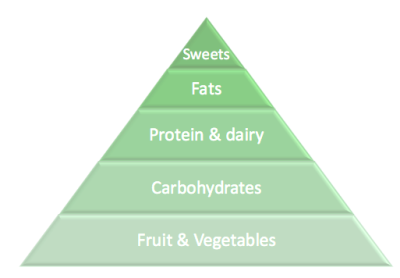
Be aware: this is only the goal of this diet, not necessarily its outcome. Results vary from person to person. Consult your doctor or dietician before starting this (or any other) diet.
The Mayo Clinic Diet aims to achieve and maintain a healthy weight through simple changes in your lifestyle.
The diet consists of two different parts, of which the last part should last for the rest of your life.
The first part of the Mayo Clinic Diet is called 'Lose it' and lasts 2 weeks. This part is considered to be a jump start to your diet.
The second part is called 'live it'. The idea here is that you reach your target weight and keep at it. The phase should therefore last for the rest of your life.
The first phase is a 'jump start' of the diet. The goal is to lose 2.5 - 4.5 kg.
In this phase you mainly work on your eating habits. You replace 5 bad eating habits with 5 good ones. Besides that, you learn about 5 (extra) good eating habits. In total you have to change 15 eating habits in this phase. Examples are:
The second phase is supposed to last for the rest of your life. Until you reach your target weight, your goal is to lose about 0.5 - 1 kg per week. After that you will focus on maintaining this weight.
The focus of phase 2 is to adopt a healthy eating pattern. The diet focuses on portion sizes, menu planning, healthy eating habits and exercise.
The Mayo Clinic diet includes a food pyramid. It is called the 'Mayo Clinic Healthy Weight Pyramid'. The food pyramid is the basis of the diet and serves as a guide to eating healthier. The pyramid consists of several layers. You eat mostly of the bottom layer and a little less of the layers above it.

The bottom layer of the pyramid consists of fruits and vegetables. The idea is that most of your diet consists of vegetables and fruits.
Carbohydrates are the second layer of the pyramid. For this layer, the advice is to pick wholemeal products mainly. Carbohydrates can also be found in vegetables and fruits.
The third layer consists of proteins and dairy products. The advice here is to go for low-fat dairy products and low-fat protein products.
The fourth layer consists of healthy fats. These include olive oil and nuts.
The last layer consists of sweets. You can eat a maximum of 75 calories of this layer per day.
The Mayo Clinic diet advises you to exercise at least 30 minutes a day. You should also take the stairs when you can and walk more often.
Consult your doctor or dietician before starting this (or any) diet.
The book of this diet is called the 'Mayo Clinic Diet'. There is a special edition available that focuses on diabetes.
Examples of other diets that use a food pyramid are PureHealth and de the Nutrition Hourglass.
Exercise at least 30 minutes a day
With the professional help of a dietitian it should be easier to reach your goals. Please contact a dietician in your area or talk to a doctor before starting any diet.
Please take note that most diets do not have a scientific basis.
Consult your doctor or dietician before starting a diet, especially if you have a chronic condition like diabetes, cardiovascular disease, lung disease or kidney disease.
If you think you might have an eating disorder (like anorexia or bulimia), it is important to look for professional help. Contact your (house) doctor or find help elsewhere. Here you can find a list of several websites that can provide (online) help. These sites also provide information for people that know someone with an eating disorder.